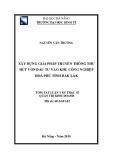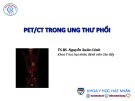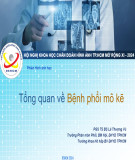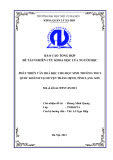
RESEA R C H Open Access
Over-expression of HO-1 on mesenchymal stem
cells promotes angiogenesis and improves
myocardial function in infarcted myocardium
Bin Zeng
1*
, Guosheng Lin
1
, Xiaofeng Ren
2
, Yan Zhang
1
, Honglei Chen
3
Abstract
Heme oxygenase-1 (HO-1) is a stress-inducible enzyme with diverse cytoprotective effects, and reported to have an
important role in angiogenesis recently. Here we investigated whether HO-1 transduced by mesenchymal stem cells
(MSCs) can induce angiogenic effects in infarcted myocardium. HO-1 was transfected into cultured MSCs using an
adenoviral vector. 1 × 10
6
Ad-HO-1-transfected MSCs (HO-1-MSCs) or Ad-Null-transfected MSCs (Null-MSCs) or PBS
was respectively injected into rat hearts intramyocardially at 1 h post-myocardial infarction. The results showed that
HO-1-MSCs were able to induce stable expression of HO-1 in vitro and in vivo. The capillary density and expression of
angiogenic growth factors, VEGF and FGF2 were significantly enhanced in HO-1-MSCs-treated hearts compared with
Null-MSCs-treated and PBS-treated hearts. However, the angiogenic effects of HO-1 were abolished by treating the
animals with HO inhibitor, zinc protoporphyrin. The myocardial apoptosis was marked reduced with significantly
reduced fibrotic area in HO-1-MSCs-treated hearts; Furthermore, the cardiac function and remodeling were also
significantly improved in HO-1-MSCs-treated hearts. Our current findings support the premise that HO-1 transduced
by MSCs can induce angiogenic effects and improve heart function after acute myocardial infarction.
Introduction
Recent pre-clinical and clinical studies have demonstrated
that mesenchymal stem cells (MSCs) transplantation can
attenuate ventricular remodeling and augment cardiac
function when implanted into the infarcted myocardium.
With an emerging interest to combine cell transplantation
with gene therapy, MSCs are being assessed for their
potential as carriers of exogenous therapeutic genes[1].
Several studies have showed that genetic modification of
donor cells prior to transplantation may result in their
enhanced survival, better engraftment and improved
restoration in infarcted hearts. Genetic modification MSCs
with antiapoptotic Bcl-2 gene enhanced the survival of
engrafted MSCs in the heart after acute myocardial infarc-
tion, ameliorated LV remodeling and improved LV func-
tion[2]. Recent study shows that transplantation of MSCs
transduced with Connexin43 gene into a rat MI model
enhances MSCs survival, reduces infarct size, and improves
contractile performance[3]. MSCs over-expressing Akt
limit infarct size and improve ventricular function, and the
functional improvement occurs in < 72 h[4]. However,
improved survival of the cell graft may be less meaning if
regional blood flow in the ischemic myocardium is not
restored, especially expecting for long-term therapeutic
effects.
HO-1 is a stress-inducible rate-limiting enzyme that cat-
alyzes the breakdown of pro-oxidant heme into biliverdin,
carbon monoxide (CO) and free iron. Biliverdin can be
reduced to bilirubin by biliverdin reductase[5]. Several stu-
dies have shown that HO-1 is an anti-apoptotic and anti-
oxidant enzyme, possessing cytoprotective activity under
ischemic environment and increasing cell survival.
Recently, studies have implicated a role for HO-1 in angio-
genesis. Increasing expression of HO-1 can enhance prolif-
eration and tube formation in human microvascular
endothelial cells[6], and stromal cell-derived factor 1 pro-
motes angiogenesis via a HO-1 dependent mechanism[7].
Furthermore, local HO-1 inhibition blocks angiogenesis[8].
Nevertheless, whether HO-1 transduced by MSCs has an
effect on angiogenesis remains unclear. To test the hypo-
thesis, we infected MSCs with recombinant adenovirus
bearing human HO-1 (Adv-hHO-1) according to our
* Correspondence: zengbinwhu@yahoo.com
1
Department of Cardiology, Renmin Hospital of Wuhan University, Wuhan,
Hubei, China
Full list of author information is available at the end of the article
Zeng et al.Journal of Biomedical Science 2010, 17:80
http://www.jbiomedsci.com/content/17/1/80
© 2010 Zeng et al; licensee BioMed Central Ltd. This is an Open Access article distributed under the terms of the Creative Commons
Attribution License (http://creativecommons.org/licenses/by/2.0), which permits unrestricted use, distribution, and reproduction in
any medium, provided the original work is properly cited.






























